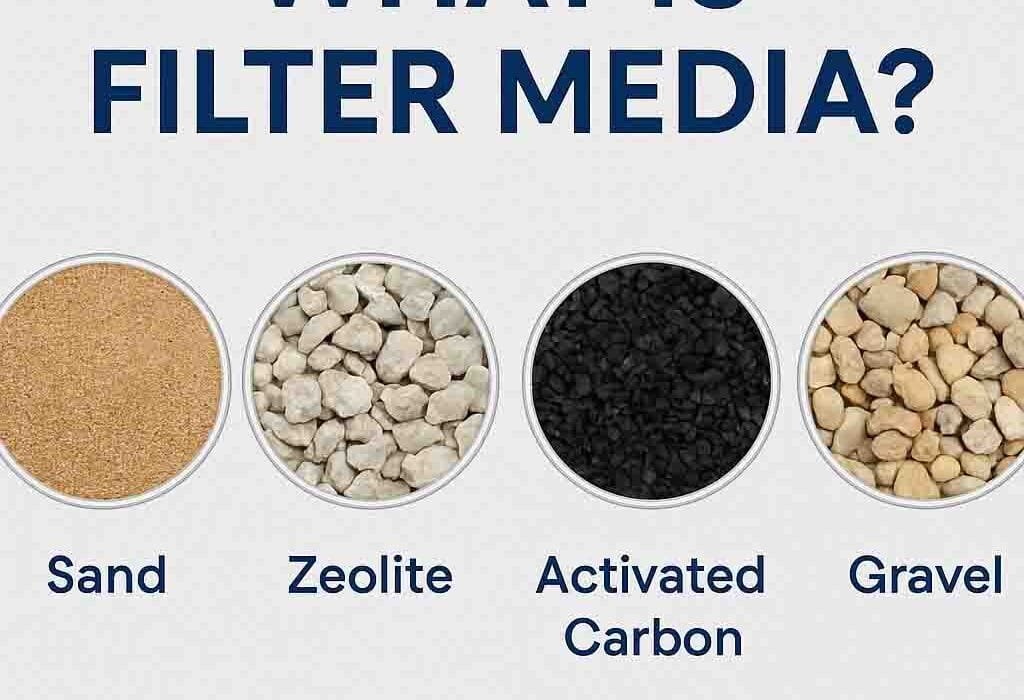What is Filter Media in Water Treatment?
In the world of water treatment, filter media is the cornerstone of efficient filtration systems. It refers to the materials used to trap, retain, or remove contaminants—such as sediments, bacteria, chlorine, and organic matter from water.
Filter media are available in various natural and engineered forms, including:
Silica Sand
Zeolite
Activated Carbon
Gravel
Choosing the right media is vital because it directly impacts filtration efficiency, lifespan, and water quality outcomes. At Starke Filter Media, we supply globally trusted, application-specific filter media for residential, municipal, and industrial water treatment systems.
Types of Filter Media Materials
Each type of filter media serves a unique function in water purification. Here’s a breakdown of commonly used materials:
Sand Filter Media
Ideal for sediment and turbidity removal
Common in slow sand filters and pre-filtration
Durable, cost-effective, and low maintenance
Used in: Domestic filters, pools, municipal water plants
Zeolite Filter Media
Excellent for ammonia and nitrogen removal
High cation-exchange capacity
Outperforms sand in wastewater and aquaculture
Used in: Swimming pools, fish farms, ETP/STP plants
Activated Carbon Filter Media
Removes chlorine, odors, VOCs, and organic compounds
High surface area due to microporosity
Based on coconut shell carbon (Starke sells only water-grade)
Used in: Drinking water, bottling plants, industries
Gravel Filter Media
Works as a support bed in multimedia filters
Ensures flow distribution and prevents clogging
Used under finer media like sand or carbon
Why Filter Media Density Matters
Filter media density affects the flow rate and contaminant removal efficiency. A higher-density medium may offer better filtration but restrict water flow. Conversely, a lower-density medium might allow more water but less particle capture.
✅ Example:
High-density Zeolite: Captures ammonia, smaller particles
Medium-density Sand: Removes suspended solids
Low-density Gravel: Ensures stable support and drainage
Choosing the right balance of density ensures optimal filtration with minimal backpressure or clogging.
How to Calculate the Right Filter Media Bed
Designing an effective filter media bed involves calculating:
Flow rate (m³/hr)
Target particle size
Desired filtration efficiency
Operating time before backwashing or replacement
A filter media calculator can help determine the optimal layer height, media type, and configuration for your application. At Starke, we offer consultation and tools to design efficient beds tailored to each system.
Key Filter Media Characteristics to Consider
When selecting any type of filter media, look for the following characteristics:
| Characteristic | Why It Matters |
|---|---|
| Porosity | Affects flow rate and contaminant retention |
| Particle Size | Determines the smallest particle that can be trapped |
| Mechanical Strength | Prevents breakdown and media migration |
| Chemical Compatibility | Ensures no reaction with filtered water |
Best Filter Media for Water Treatment Applications
| Application | Recommended Filter Media |
|---|---|
| Drinking Water | Activated Carbon, Sand |
| Wastewater Treatment | Zeolite, Gravel |
| Aquaculture & Fish Tanks | Zeolite, Sand |
| Swimming Pools | Zeolite (Pool Grade) |
| Pre-Treatment for RO Systems | Sand, Gravel, Carbon |
Zeolite vs. Other Filter Media
Zeolite’s ion-exchange capacity makes it highly effective in applications requiring ammonia removal. When compared:
| Feature | Zeolite | Sand | Activated Carbon |
|---|---|---|---|
| Ammonia Removal | ✅ Excellent | ❌ Poor | ❌ Ineffective |
| Sediment Removal | ✅ Good | ✅ Excellent | ❌ Limited |
| Chlorine Removal | ❌ Not Applicable | ❌ Not Applicable | ✅ Excellent |
For specialized filtration (e.g., fish tanks, pools, ETP/STP), zeolite offers a clear advantage over traditional media.
How to Choose the Right Filter Media
When selecting a filter media, ask the following:
What contaminants do you need to remove?
What is your flow rate requirement?
What is the nature of your water (chemical composition, turbidity)?
What are your maintenance or backwash preferences?
Frequently Asked Questions (FAQs)
Q1: Can I use sand for drinking water?
Yes, sand is effective for removing suspended particles and is widely used in municipal and domestic filters.
Q2: Is zeolite better than sand?
Depends on the application. Zeolite is better for ammonia; sand is better for general sediment.
Q3: What’s the best filter media for pools?
Zeolite is highly effective in keeping pools clearer by removing nitrogen compounds.
Q4: How to calculate filter media quantity?
Use a filter media calculator based on flow rate, bed depth, and application type. Starke can assist with this.
Why Choose Starke for Filter Media?
✅ 20+ Years of Expertise
🌍 Exporting to 25+ Countries
🧪 Batch-wise Lab Testing
📦 Wide Inventory in Stock
📞 Expert Application Support
Get Started with Starke Today
Looking to upgrade your filtration system with premium filter media?
📧 Email us at: info@starkefiltermedia.com
🌐 Visit: https://www.starkefiltermedia.com

